Blu Tack sales must have gone through the roof in both September and December of 1981, when Look-In Magazine put Adam Ant on the cover. Teenage girls everywhere were tying tiny ribbons in their hair and covering their faces with stripy make-up in homage to their flamboyant heartthrob.
Born on November 3, 1954 as Stuart Leslie Goddard, the man who went on to symbolise the New Romantic movement in the early 1980s explored many musical genres in his pre-fame career, before becoming known as the charismatic front man with a fondness for theatrical costumes and tongue-in-cheek posturing. His first attempts at show business embraced pub rock, punk, soul, funk, disco, post-punk and glam rock; and he gained a cult following with each attempt, if not immediate commercial recognition.
His enormous magnetism as a performer helped power the Ants to eventual recognition, with frequent appearances on Top of the Pops reinforcing their popularity. These were in stark contradiction with their first live performance. After playing one song at the central London ICA restaurant in May 1977, they were asked to leave; the bemused audience obviously wasn’t expecting, and didn’t appreciate, the explosive and fairly bizarre post-punk performance. The band persevered, and it paid off with an invitation to record a Peel Session in January 1978 (the first of three), which was followed by a one year contract with Decca Records, line-up changes, a brief stint with Malcolm McLaren as their manager, more line-up changes, tours and then a major record deal with CBS Records. The album Kings of the Wild Frontier took the UK number 1 spot in January 1981 and Adam and the Ants hit the big time.
Probably the two most famous - and most lusted over - incarnations of Adam swiftly followed. As the Dandy Highwayman in Stand and Deliver, Adam swung out of trees and smashed through windows wearing a tri-corn hat and bold face make up with style. He also cavorted with pretty noble women and gave plenty of close ups to camera so his cheekbones (and his tight leather trousers) could be admired. The song went to number one in May 1981 and stayed there for five weeks. In September of the same year, Adam played the Cinderella character to Diana Dors’ Fairy Godmother; turning him from a rag-clad servant into a handsome Prince Charming (tight metallic silver trousers this time – see the theme developing here?) wowing the ladies at a posh ball. This single stayed at number one for four weeks.
In 1982, despite the band being nominated for a Grammy and winning a Brit Award for Best British Album and an Ivor Novello Award for Songwriters of the Year (for Stand and Deliver), Adam decided that particular members of the band weren’t passionate enough. It feels as though they were part of the British music scene for so much longer than they were, but just a couple of years after their big signing with CBS the band broke up. Performing from then on as a solo artist Adam achieved a third number one with Goody Two Shoes. He also pursued an acting career, and appeared in films, television programmes and plays, both in the UK and in the USA. Women (and men) across the Atlantic were obviously pleased to see him; in 1983 MTV viewers voted him ‘World’s Sexiest Man’.
Adam’s struggle with bi-polar disorder has been well documented, and led to many years during the 1990s and 2000s where he stepped away from the world of show business, but 2007 saw him return to the Bloomsbury Theatre for a live performance, and from there slowly come back into public awareness. Since then he has won the Q Music Icon Award, seen past albums rereleased, started his own record label, performed many more live events and been on several tours, as well as becoming involved in his own fashion line. He’s one of the UK’s most eccentric and interesting pop stars, and despite his own personal battles, it looks like there’s every chance of him continuing to be so for many years to come.

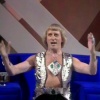

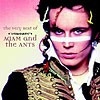
 - Booklet-1-square-100x100.jpg)
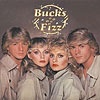
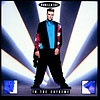
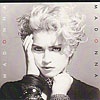

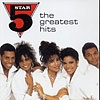
Do You Remember Adam Ant?
Do You Remember Adam Ant?